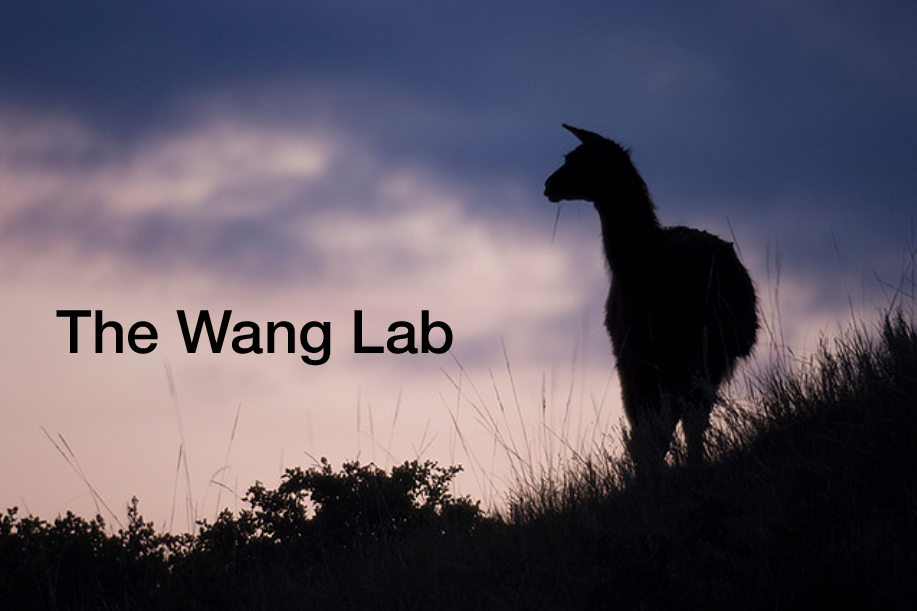WANG LAB
Principal Investigator: Jiwu Wang, PhD
email: jiwuwang@scintillon.org
Research Focus: RNA-related cellular processes, iPSC, artificial organelles, machine learning in diagnostics
RNA-related cellular processes. My team has been studying the molecular biology of RNA-related cellular processes, such as pre-mRNA splicing, RNA interference (RNAi), microRNA (miRNA) in developmental control, and mRNA as a platform for transgene.
Many of our most exciting research projects were derived from what we had learned about RNA. We are performing experiment in order to answer questions such as: can we use mRNA as the genetic codes to select antibodies by an in vitro display or transcriptome sequencing? Can protein factors that are critical in vivo be delivered in the form of modified mRNAs instead of recombinant proteins? Can we use transfected mRNA/miRNA to determine in vitro cellular fate instead of using growth factors and small molecules for better specificity? Can we use only RNA molecules to edit the chromosome of mammalian cells in order to maintain the protocol completely footprint-free, similar to what we have demonstrated for induced pluripotent stem cell (iPSC) production?
Cell differentiation. We are also curious about how gene expression cascades control cell differentiation, in conjunction with miRNA networks, particularly in adipogenesis. Our method of investigating obesity and diabetes development has been to analyze adipocytes from healthy vs patients through bioinformatics analysis. We plan to apply our recently developed iPSC technologies, with knocked-in biomarkers using our superior fluorescent proteins (FPs), to follow fat cell development.
One of our aims is to create brown fat cells (BFCs, the good fat cells) from patient-specific iPSCs that can be ultimately applied to patients. We use similar strategies to study how iPSCs differentiate into neuronal cells, cardiomyocytes, hepatocytes, muscle cells, etc. Recently, we showed that stem cells can be turned into platelets on a scale potentially suitable for clinical applications.
Nanoantibodies from Llamas: In 2008, we stumbled upon a new class of antibody from the literature--the heavy chain-only IgG antibodies from camelids like llamas, from which single-domain antibodies (VHH, nanobodies) could be isolated and used to bind targets in all new fashions. Since then, my team has meticulously built a process to find the best of them to solve some of the toughest biomedical problems, including cancers, aging, and inflammation. Now, we are, for the first time, turning these special antibodies, fused with our brightest fluorescent proteins, into powerful signaling molecules to detect SARS-CoV-2. We are also making them into weapons to against the pandemic infection as well as the symptoms of COVID-19 patients.
Machine learning. There has been a rapid adaption of using artificial intelligence-based algorithms, such as neural networks as a type of machine learning, to find patterns hidden in data sets and to predict the likelihood of future events and trends. Since 2018 my group has endeavored in using machine learning in food quality control and diagnostics of cancer, and now of COVID-19.
Recent Publications:
Rivera T, Zhao Y, Ni Y, Wang J. Human-Induced Pluripotent Stem Cell Culture Methods Under cGMP Conditions. Current Protocols, Stem Cell Biol. 2020 Sep;54(1):e117. doi: 10.1002/cpsc.117. PMID: 32649060
Mourad, M., S. Moubayed, A. Dezube, Y. Mourad, K. Park, A. Torreblanca-Zanca, J. S. Torrecilla, J. C. Cancilla and Wang J. Machine Learning and Feature Selection to Reliably Assess Thyroid Cancer Prognosis. (Nature) Sci Rep. (2020) 10:5176. PMCID: PMC7083829
Wong, A, Sykora, C, Rogers, L, Higginbotham, J, Wang J. Modified Nanoantibodies Increase Sensitivity in Avidin-Biotin Immunohistochemistry. Appl Immunohistochem Mol Morphol. (2018) Oct;26(9):682-688. doi: 10.1097/PAI.0000000000000488. PMID: 28059871
Ni Y, Zhao Y, Warren L, Ni Y, Higginbotham J, Wang J. (2016) cGMP Generation of Human induced Pluripotent Stem Cells with Messenger RNA. Current Protocols, Stem Cell Biol. 39:4A.6.1-4A.6.25. doi: 10.1002/cpsc.18, PMID: 31816187
Wang G, McCain ML, Yang L, He A, Pasqualini FS, et al. Modeling the mitochondrial cardiomyopathy of Barth syndrome with induced pluripotent stem cell and heart-on-chip technologies. Nat Medicine. 2014 Jun;20(6):616-23. PubMed PMID: 24813252; PubMed Central PMCID: PMC4172922
Feng Q, Shabrani N, Thon JN, Huo H, Thiel A, et al. Scalable generation of universal platelets from human induced pluripotent stem cells. (Cell) Stem Cell Reports. (2014) Nov 11;3(5):817-31. PubMed PMID: 25418726;
Warren L, Wang J. Feeder-free reprogramming of human fibroblasts with messenger RNA. Current Protocols, Stem Cell Biol. (2013) Nov 13;27:Unit 4A.6. PubMed PMID: 24510287.
Shaner NC, Lambert GG, Chammas A, Ni Y, Cranfill PJ, et al., Wang J. A bright monomeric green fluorescent protein derived from Branchiostoma lanceolatum. Nat Methods. 2013 May;10(5):407-9. PubMed PMID: 23524392;
Warren L, Ni Y, Wang J. (corresponding author), Guo X. Feeder-free derivation of human induced pluripotent stem cells with messenger RNA. (Nature) Sci Rep. (2012);2:657. PubMed PMID: 22984641; PubMed Central PMCID: PMC3442198.

